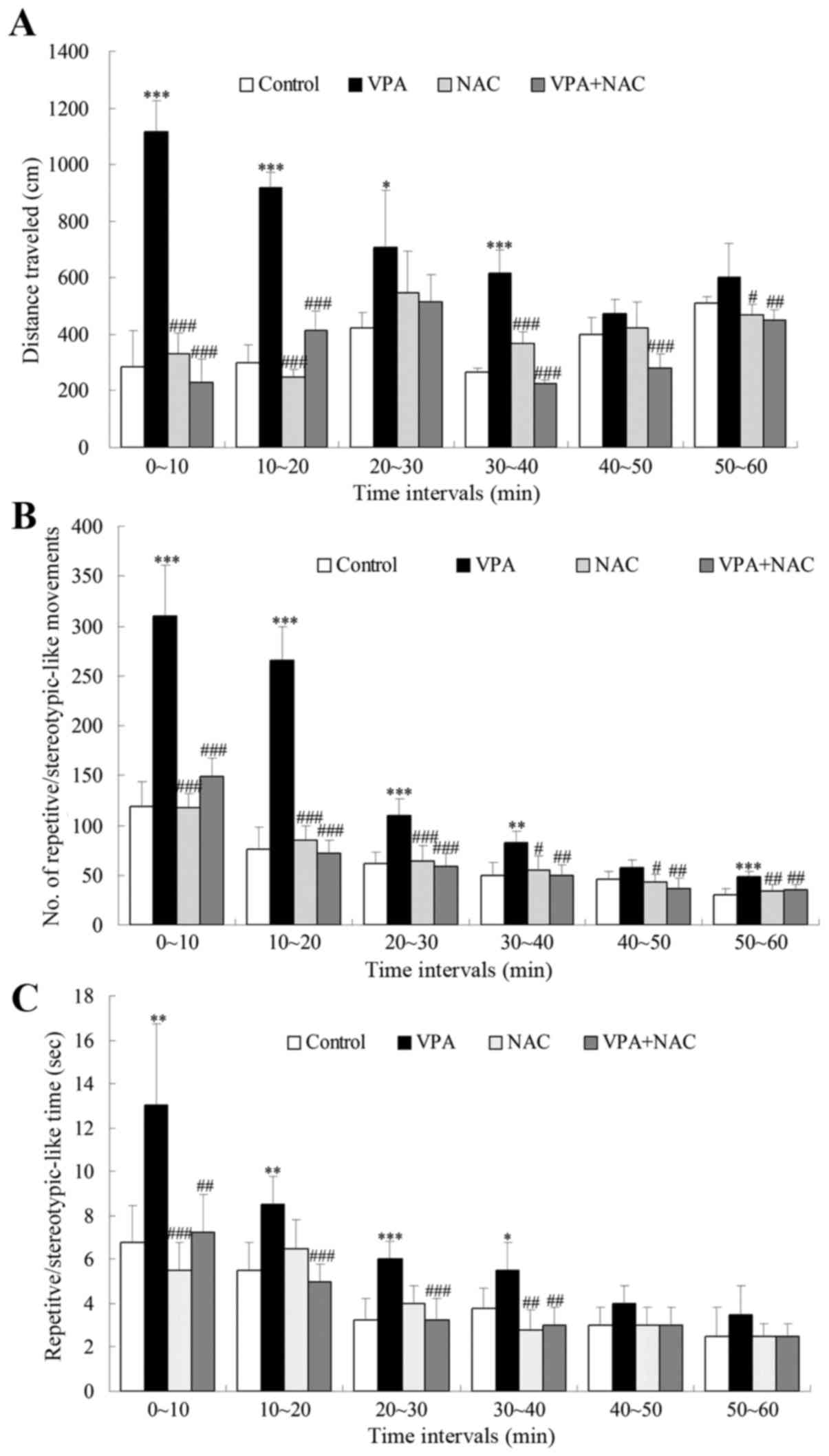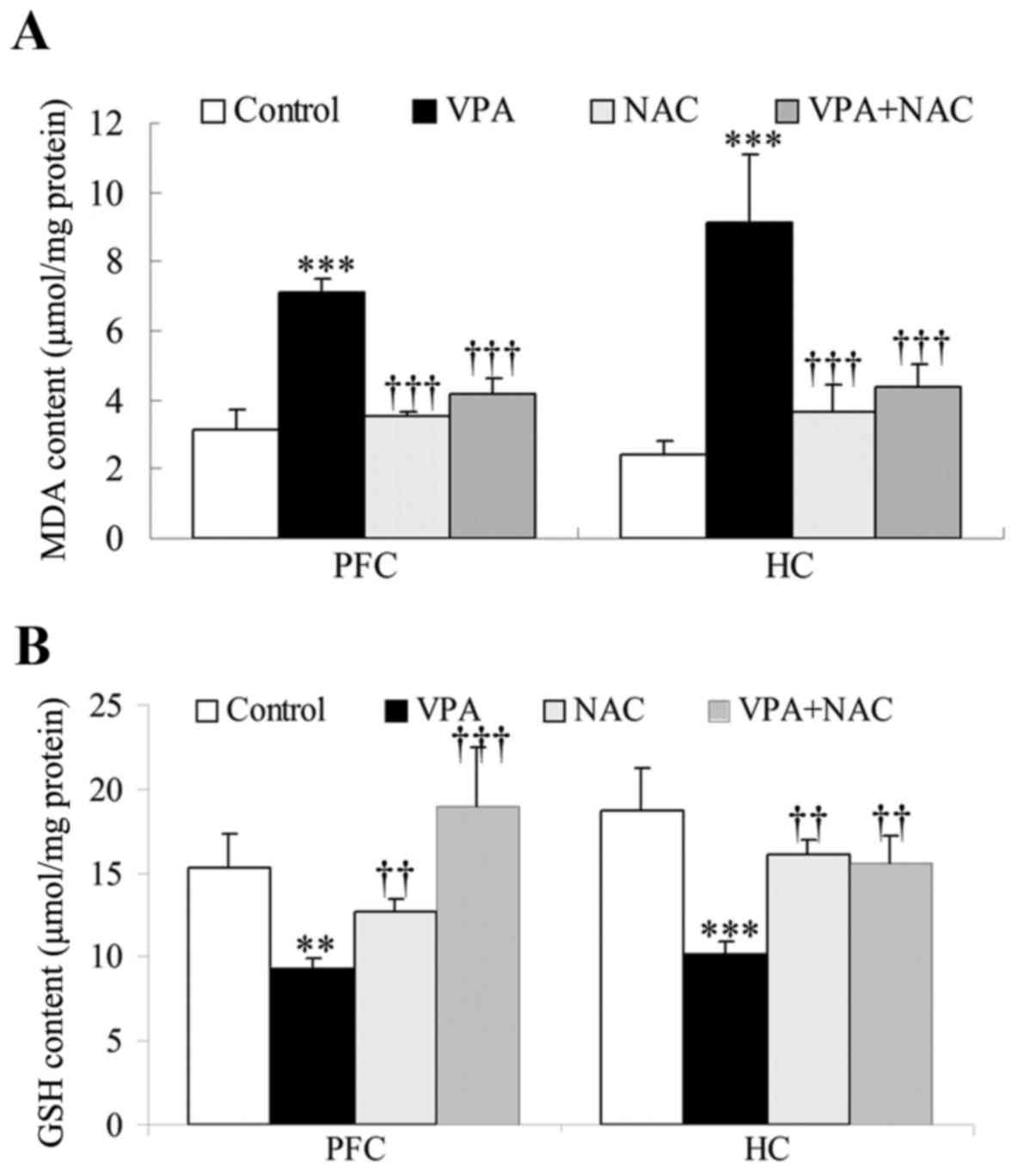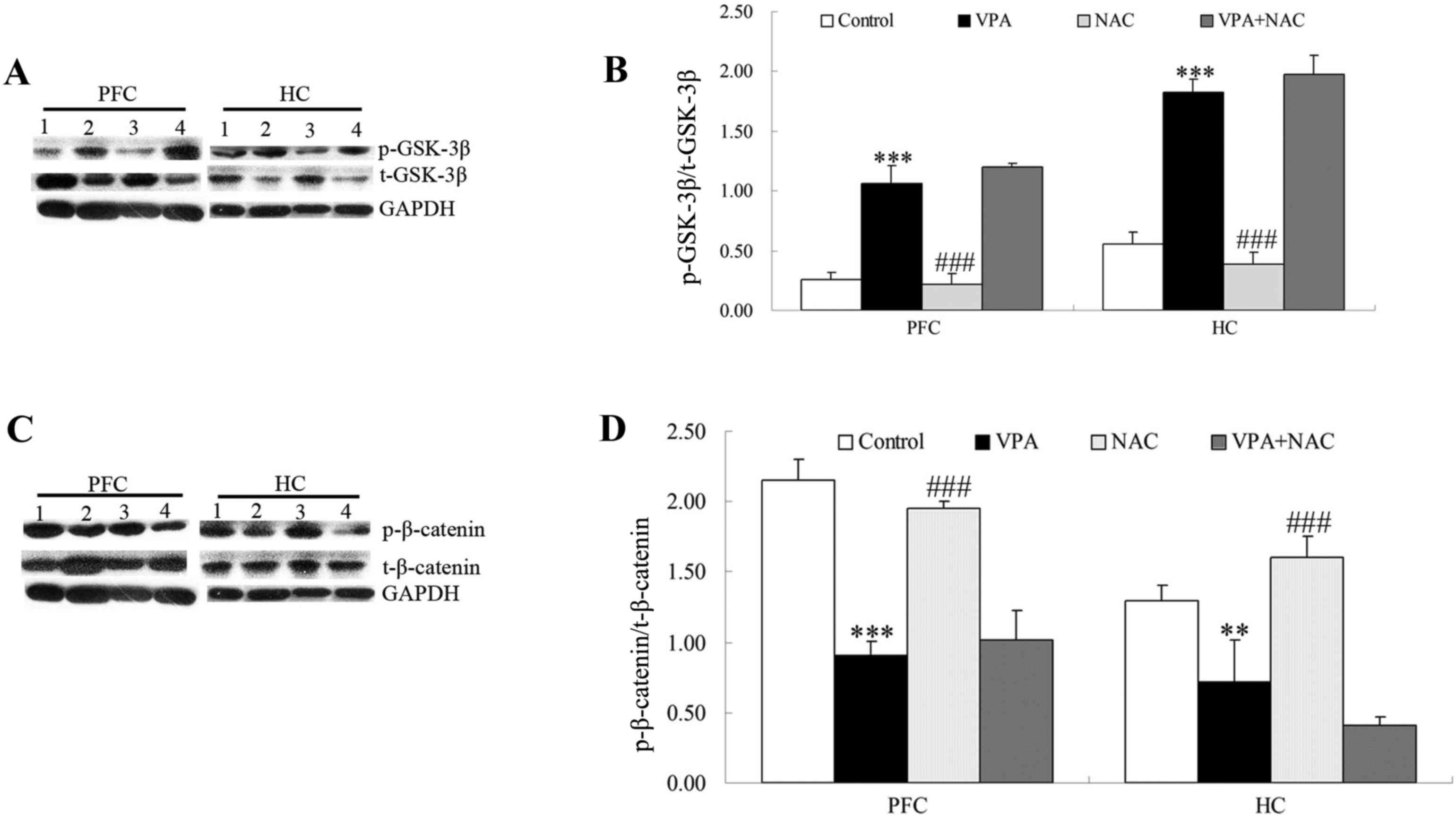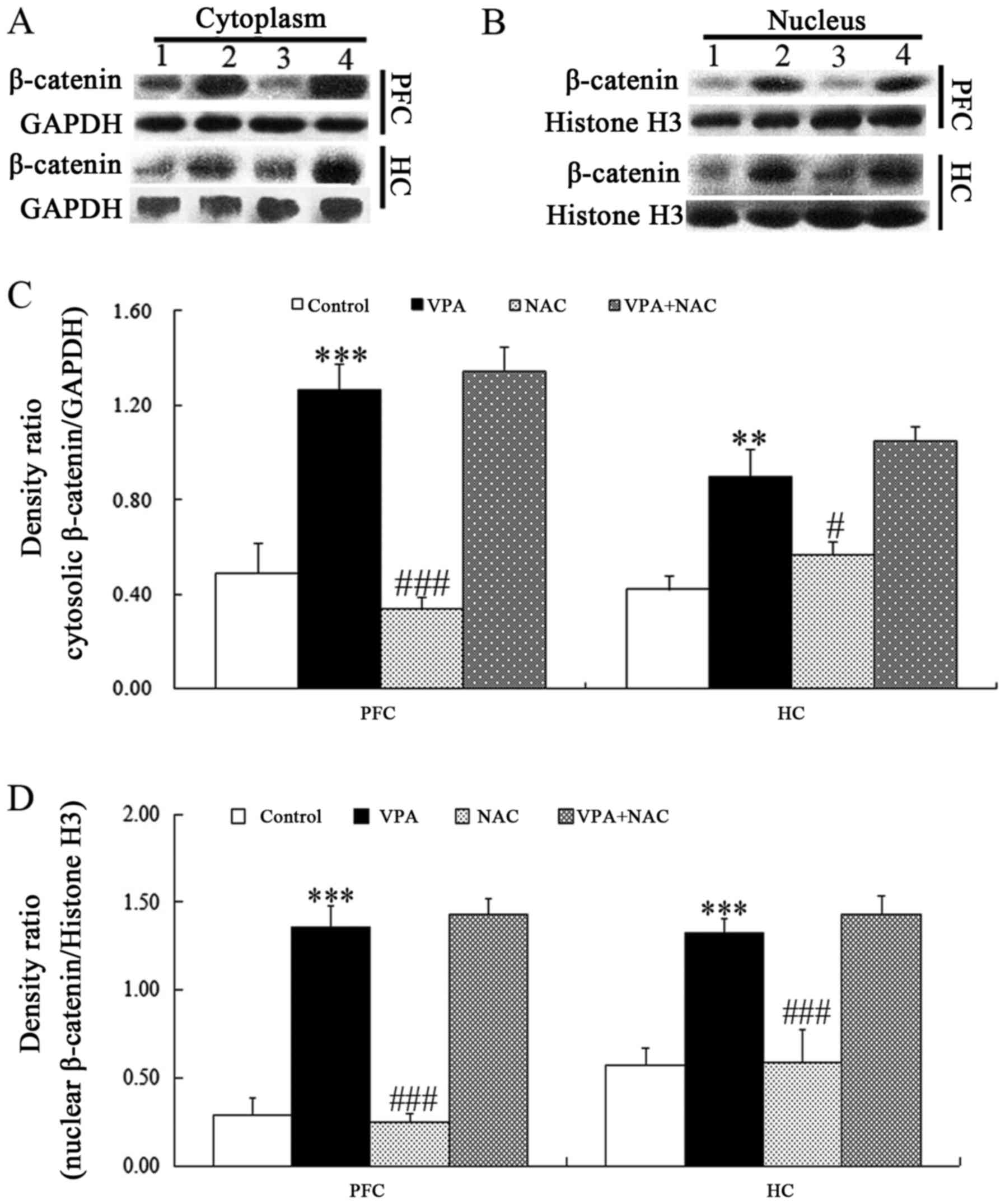|
1
|
Baird G, Simonoff E, Pickles A, Chandler
S, Loucas T, Meldrum D and Charman T: Prevalence of disorders of
the autism spectrum in a population cohort of children in South
Thames: The special needs and autism project (SNAP). Lancet.
368:210–215. 2006. View Article : Google Scholar : PubMed/NCBI
|
|
2
|
Levitt P and Campbell DB: The genetic and
neurobiologic compass points toward common signaling dysfunctions
in autism spectrum disorders. J Clin Invest. 119:747–754. 2009.
View Article : Google Scholar : PubMed/NCBI
|
|
3
|
Christensen DL, Baio J, Van Naarden Braun
K, Bilder D, Charles J, Constantino JN, Daniels J, Durkin MS,
Fitzgerald RT, Kurzius-Spencer M, et al: Prevalence and
characteristics of autism spectrum disorder among children aged 8
years-autism and developmental disabilities monitoring network, 11
sites, United States, 2012. MMWR Surveill Summ. 65:1–23. 2016.
View Article : Google Scholar : PubMed/NCBI
|
|
4
|
Ghezzo A, Visconti P, Abruzzo PM, Bolotta
A, Ferreri C, Gobbi G, Malisardi G, Manfredini S, Marini M, Nanetti
L, et al: Oxidative stress and erythrocyte membrane alterations in
children with autism: Correlation with clinical features. PLoS One.
8:e664182013. View Article : Google Scholar : PubMed/NCBI
|
|
5
|
Ghanizadeh A, Akhondzadeh S, Hormozi M,
Makarem A, Abotorabi-Zarchi M and Firoozabadi A:
Glutathione-related factors and oxidative stress in autism, a
review. Curr Med Chem. 19:4000–4005. 2012. View Article : Google Scholar : PubMed/NCBI
|
|
6
|
Dean O, Giorlando F and Berk M:
N-acetylcysteine in psychiatry: Current therapeutic evidence and
potential mechanisms of action. J Psychiatry Neurosci. 36:78–86.
2011. View Article : Google Scholar : PubMed/NCBI
|
|
7
|
Ghanizadeh A and Derakhshan N:
N-acetylcysteine for treatment of autism, a case report. J Res Med
Sci. 17:985–987. 2012.PubMed/NCBI
|
|
8
|
Paintlia MK, Paintlia AS, Barbosa E, Singh
I and Singh AK: N-acetylcysteine prevents endotoxin-induced
degeneration of oligodendrocyte progenitors and hypomyelination in
developing rat brain. J Neurosci Res. 78:347–361. 2004. View Article : Google Scholar : PubMed/NCBI
|
|
9
|
Wang X, Svedin P, Nie C, Lapatto R, Zhu C,
Gustavsson M, Sandberg M, Karlsson JO, Romero R, Hagberg H and
Mallard C: N-acetylcysteine reduces lipopolysaccharide-sensitized
hypoxic-ischemic brain injury. Ann Neurol. 61:263–271. 2007.
View Article : Google Scholar : PubMed/NCBI
|
|
10
|
Farr SA, Poon HF, Dogrukol-Ak D, Drake J,
Banks WA, Eyerman E, Butterfield DA and Morley JE: The antioxidants
alpha-lipoic acid and N-acetylcysteine reverse memory impairment
and brain oxidative stress in aged SAMP8 mice. J Neurochem.
84:1173–1183. 2003. View Article : Google Scholar : PubMed/NCBI
|
|
11
|
Holmay MJ, Terpstra M, Coles LD, Mishra U,
Ahlskog M, Öz G, Cloyd JC and Tuite PJ: N-acetylcysteine boosts
brain and blood glutathione in gaucher and parkinson diseases. Clin
Neuropharmacol. 36:103–106. 2013. View Article : Google Scholar : PubMed/NCBI
|
|
12
|
Hardan AY, Fung LK, Libove RA, Obukhanych
TV, Nair S, Herzenberg LA, Frazier TW and Tirouvanziam R: A
randomized controlled pilot trial of oral N-acetylcysteine in
children with autism. Biol Psychiatry. 71:956–961. 2012. View Article : Google Scholar : PubMed/NCBI
|
|
13
|
Marler S, Sanders KB and
Veenstra-VanderWeele J: N-acetylcysteine as treatment for
self-injurious behavior in a child with autism. J Child Adolesc
Psychopharmacol. 24:231–234. 2014. View Article : Google Scholar : PubMed/NCBI
|
|
14
|
Ghanizadeh A and Moghimi-Sarani E: A
randomized double blind placebo controlled clinical trial of
N-Acetylcysteine added to risperidone for treating autistic
disorders. BMC Psychiatry. 13:1962013. View Article : Google Scholar : PubMed/NCBI
|
|
15
|
Nikoo M, Radnia H, Farokhnia M, Mohammadi
MR and Akhondzadeh S: N-acetylcysteine as an adjunctive therapy to
risperidone for treatment of irritability in autism: A randomized,
double-blind, placebo-controlled clinical trial of efficacy and
safety. Clin Neuropharmacol. 38:11–17. 2015. View Article : Google Scholar : PubMed/NCBI
|
|
16
|
Chen YW, Lin HC, Ng MC, Hsiao YH, Wang CC,
Gean PW and Chen PS: Activation of mGluR2/3 underlies the effects
of N-acetylcystein on amygdala-associated autism-like phenotypes in
a valproate-induced rat model of autism. Front Behav Neurosci.
8:2192014. View Article : Google Scholar : PubMed/NCBI
|
|
17
|
Kimelman D and Xu W: Beta-catenin
destruction complex: Insights and questions from a structural
perspective. Oncogene. 25:7482–7491. 2006. View Article : Google Scholar : PubMed/NCBI
|
|
18
|
Sierra J, Yoshida T, Joazeiro CA and Jones
KA: The APC tumor suppressor counteracts beta-catenin activation
and H3K4 methylation at Wnt target genes. Genes Dev. 20:586–600.
2006. View Article : Google Scholar : PubMed/NCBI
|
|
19
|
Toledo EM, Colombres M and Inestrosa NC:
Wnt signaling in neuroprotection and stem cell differentiation.
Prog Neurobiol. 86:281–296. 2008. View Article : Google Scholar : PubMed/NCBI
|
|
20
|
Zhuang B, Luo X, Rao H, Li Q, Shan N, Liu
X and Qi H: Oxidative stress-induced C/EBPβ inhibits β-catenin
signaling molecule involving in the pathology of preeclampsia.
Placenta. 36:839–846. 2015. View Article : Google Scholar : PubMed/NCBI
|
|
21
|
Hsu YC, Lee PH, Lei CC, Ho C, Shih YH and
Lin CL: Nitric oxide donors rescue diabetic nephropathy through
oxidative-stress-and nitrosative-stress-mediated Wnt signaling
pathways. J Diabetes Investig. 6:24–34. 2015. View Article : Google Scholar : PubMed/NCBI
|
|
22
|
Yoshida GJ and Saya H: Inversed
relationship between CD44 variant and c-Myc due to oxidative
stress-induced canonical Wnt activation. Biochem Biophys Res
Commun. 443:622–627. 2014. View Article : Google Scholar : PubMed/NCBI
|
|
23
|
Hormozdiari F, Penn O, Borenstein E and
Eichler EE: The discovery of integrated gene networks for autism
and related disorders. Genome Res. 25:142–154. 2015. View Article : Google Scholar : PubMed/NCBI
|
|
24
|
Zhang Y, Yuan X, Wang Z and Li R: The
canonical Wnt signaling pathway in autism. CNS Neurol Disord Drug
Targets. 13:765–770. 2014. View Article : Google Scholar : PubMed/NCBI
|
|
25
|
Marui T, Funatogawa I, Koishi S, Yamamoto
K, Matsumoto H, Hashimoto O, Jinde S, Nishida H, Sugiyama T, Kasai
K, et al: Association between autism and variants in the
wingless-type MMTV integration site family member 2 (WNT2) gene.
Int J Neuropsychopharmacol. 13:443–449. 2010. View Article : Google Scholar : PubMed/NCBI
|
|
26
|
Schneider T, Turczak J and Przewłocki R:
Environmental enrichment reverses behavioral alterations in rats
prenatally exposed to valproic acid: Issues for a therapeutic
approach in autism. Neuropsychopharmacology. 31:36–46.
2006.PubMed/NCBI
|
|
27
|
Silvestrin R Bristot, Bambini-Junior V,
Galland F, Bobermim L Daniele, Quincozes-Santos A, Abib R Torres,
Zanotto C, Batassini C, Brolese G, Gonçalves CA, et al: Animal
model of autism induced by prenatal exposure to valproate: Altered
glutamate metabolism in the hippocampus. Brain Res. 1495:52–60.
2013. View Article : Google Scholar : PubMed/NCBI
|
|
28
|
Zhang Y, Sun Y, Wang F, Wang Z, Peng Y and
Li R: Downregulating the canonical Wnt/β-catenin signaling pathway
attenuates the susceptibility to autism-like phenotypes by
decreasing oxidative stress. Neurochem Res. 37:1409–1419. 2012.
View Article : Google Scholar : PubMed/NCBI
|
|
29
|
Slattery J Deepmala, Kumar N, Delhey L,
Berk M, Dean O, Spielholz C and Frye R: Clinical trials of
N-acetylcysteine in psychiatry and neurology: A systematic review.
Neurosci Biobehav Rev. 55:294–321. 2015. View Article : Google Scholar : PubMed/NCBI
|
|
30
|
Wink LK, Adams R, Wang Z, Klaunig JE,
Plawecki MH, Posey DJ, McDougle CJ and Erickson CA: A randomized
placebo-controlled pilot study of N-acetylcysteine in youth with
autism spectrum disorder. Mol Autism. 7:262016. View Article : Google Scholar : PubMed/NCBI
|
|
31
|
Nelson WJ and Nusse R: Convergence of Wnt,
beta-catenin, and cadherin pathways. Science. 303:1483–1487. 2004.
View Article : Google Scholar : PubMed/NCBI
|
|
32
|
Rose S, Frye RE, Slattery J, Wynne R,
Tippett M, Melnyk S and James SJ: Oxidative stress induces
mitochondrial dysfunction in a subset of autistic lymphoblastoid
cell lines. Transl Psychiatry. 4:e3772014. View Article : Google Scholar : PubMed/NCBI
|
|
33
|
Gvozdjáková A, Kucharská J, Ostatníková D,
Babinská K, Nakládal D and Crane FL: Ubiquinol improves symptoms in
children with autism. Oxid Med Cell Longev. 2014:7989572014.
View Article : Google Scholar : PubMed/NCBI
|
|
34
|
Gu F, Chauhan V and Chauhan A: Glutathione
redox imbalance in brain disorders. Curr Opin Clin Nutr Metab Care.
18:89–95. 2015. View Article : Google Scholar : PubMed/NCBI
|
|
35
|
Raymond LJ, Deth RC and Ralston NV:
Potential role of selenoenzymes and antioxidant metabolism in
relation to autism etiology and pathology. Autism Res Treat.
2014:1649382014.PubMed/NCBI
|
|
36
|
James SJ, Rose S, Melnyk S, Jernigan S,
Blossom S, Pavliv O and Gaylor DW: Cellular and mitochondrial
glutathione redox imbalance in lymphoblastoid cells derived from
children with autism. FASEB J. 23:2374–2383. 2009. View Article : Google Scholar : PubMed/NCBI
|
|
37
|
Green JL, Heard KJ, Reynolds KM and Albert
D: Oral and intravenous acetylcysteine for treatment of
acetaminophen toxicity: A systematic review and meta-analysis. West
J Emerg Med. 14:218–226. 2013. View Article : Google Scholar : PubMed/NCBI
|
|
38
|
Quintavalle C, Donnarumma E, Fiore D,
Briguori C and Condorelli G: Therapeutic strategies to prevent
contrast-induced acute kidney injury. Curr Opin Cardiol.
28:676–682. 2013. View Article : Google Scholar : PubMed/NCBI
|
|
39
|
Liu XH, Xu CY and Fan GH: Efficacy of
N-acetylcysteine in preventing atrial fibrillation after cardiac
surgery: A meta-analysis of published randomized controlled trials.
BMC Cardiovasc Disord. 14:522014. View Article : Google Scholar : PubMed/NCBI
|
|
40
|
Shahripour R Bavarsad, Harrigan MR and
Alexandrov AV: N-acetylcysteine (NAC) in neurological disorders:
Mechanisms of action and therapeutic opportunities. Brain Behav.
4:108–122. 2014. View Article : Google Scholar : PubMed/NCBI
|
|
41
|
Berk M, Malhi GS, Gray LJ and Dean OM: The
promise of N-acetylcysteine in neuropsychiatry. Trends Pharmacol
Sci. 34:167–177. 2013. View Article : Google Scholar : PubMed/NCBI
|
|
42
|
Baker MS, Feigan J and Lowther DA:
Chondrocyte antioxidant defences: The roles of catalase and
glutathione peroxidase in protection against H2O2 dependent
inhibition of proteoglycan biosynthesis. J Rheumatol. 15:670–677.
1988.PubMed/NCBI
|
|
43
|
Zhou T, Zhou KK, Lee K, Gao G, Lyons TJ,
Kowluru R and Ma JX: The role of lipid peroxidation products and
oxidative stress in activation of the canonical wingless-type MMTV
integration site (WNT) pathway in a rat model of diabetic
retinopathy. Diabetologia. 54:459–468. 2011. View Article : Google Scholar : PubMed/NCBI
|
|
44
|
Gong SP, Lee EJ, Lee ST, Kim H, Lee SH,
Han HJ and Lim JM: Improved establishment of autologous stem cells
derived from preantral follicle culture and oocyte parthenogenesis.
Stem Cells Dev. 17:695–712. 2008. View Article : Google Scholar : PubMed/NCBI
|
|
45
|
Zhang Y, Yang C, Yuan G, Wang Z, Cui W and
Li R: Sulindac attenuates valproic acid-induced oxidative stress
levels in primary cultured cortical neurons and ameliorates
repetitive/stereotypic-like movement disorders in Wistar rats
prenatally exposed to valproic acid. Int J Mol Med. 35:263–270.
2015.PubMed/NCBI
|
|
46
|
Wang Z, Xu L, Zhu X, Cui W, Sun Y, Nishijo
H, Peng Y and Li R: Demethylation of specific Wnt/β-catenin pathway
genes and its upregulation in rat brain induced by prenatal
valproate exposure. Anat Rec (Hoboken). 293:1947–1953. 2010.
View Article : Google Scholar : PubMed/NCBI
|
|
47
|
Strakovsky RS and Pan YX: A decrease in
DKK1, a WNT inhibitor, contributes to placental lipid accumulation
in an obesity-prone rat model. Biol Reprod. 86:812012. View Article : Google Scholar : PubMed/NCBI
|
|
48
|
Chen JR, Lazarenko OP, Shankar K,
Blackburn ML, Badger TM and Ronis MJ: A role for ethanol-induced
oxidative stress in controlling lineage commitment of mesenchymal
stromal cells through inhibition of Wnt/beta-catenin signaling. J
Bone Miner Res. 25:1117–1127. 2010. View
Article : Google Scholar : PubMed/NCBI
|
|
49
|
McGrew LL, Takemaru K, Bates R and Moon
RT: Direct regulation of the Xenopus engrailed-2 promoter by the
Wnt signaling pathway, and a molecular screen for Wnt-responsive
genes, confirm a role for Wnt signaling during neural patterning in
Xenopus. Mech Dev. 87:21–32. 1999. View Article : Google Scholar : PubMed/NCBI
|
|
50
|
Bilodeau JF, Wang M, Chung FL and
Castonguay A: Effects of nonsteroidal antiinflammatory drugs on
oxidative pathways in A/J mice. Free Radic Biol Med. 18:47–54.
1995. View Article : Google Scholar : PubMed/NCBI
|
|
51
|
Dairam A, Müller AC and Daya S:
Non-steroidal anti-inflammatory agents, tolmetin and sulindac
attenuate quinolinic acid (QA)-induced oxidative stress in primary
hippocampal neurons and reduce QA-induced spatial reference memory
deficits in male Wistar rats. Life Sci. 80:1431–1438. 2007.
View Article : Google Scholar : PubMed/NCBI
|
|
52
|
Sur A, Kesaraju S, Prentice H, Ayyanathan
K, Baronas-Lowell D, Zhu D, Hinton DR, Blanks J and Weissbach H:
Pharmacological protection of retinal pigmented epithelial cells by
sulindac involves PPAR-α. Proc Natl Acad Sci USA. 111:16754–16759.
2014. View Article : Google Scholar : PubMed/NCBI
|













